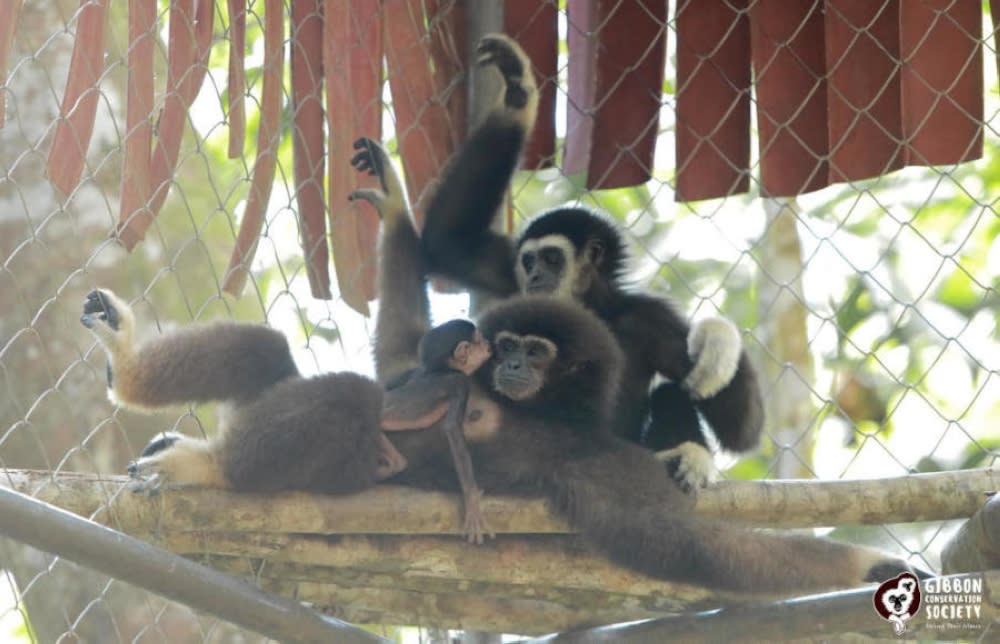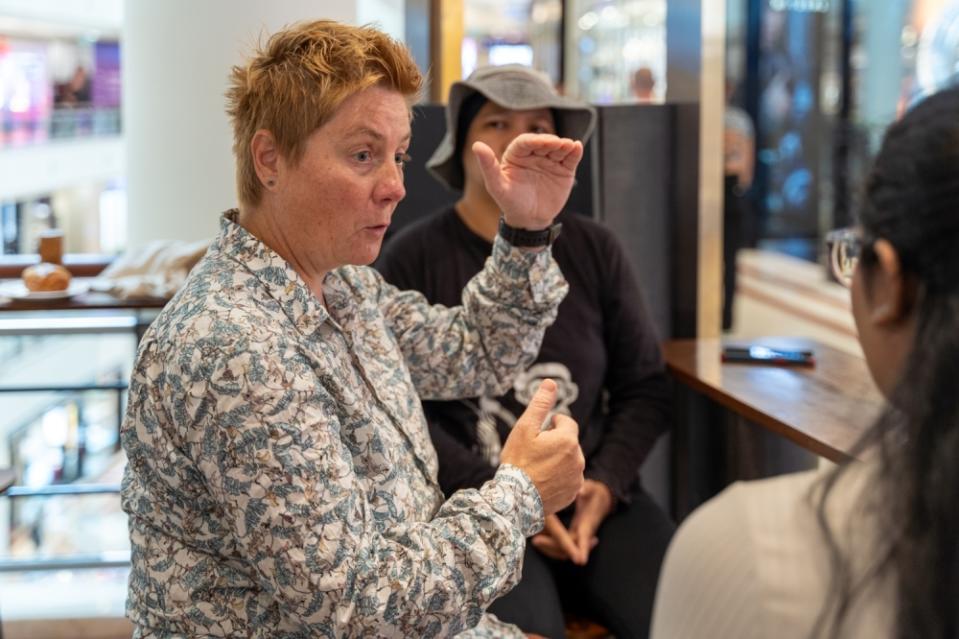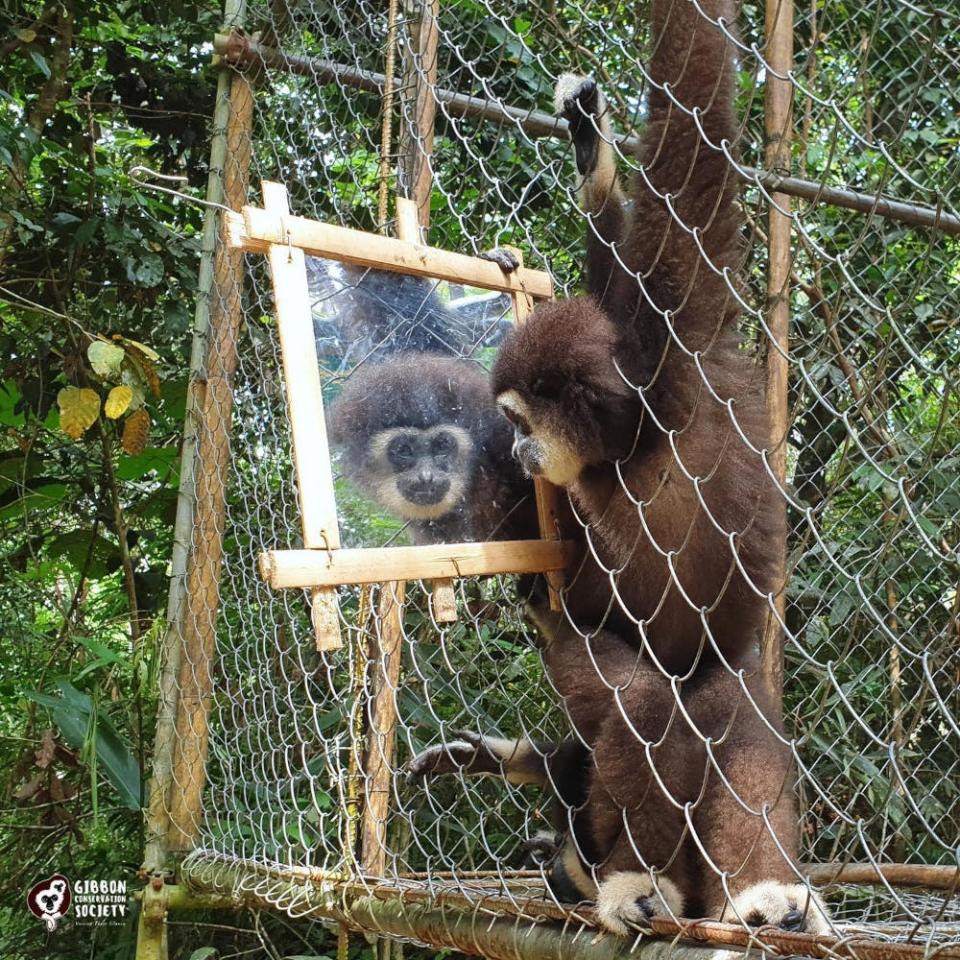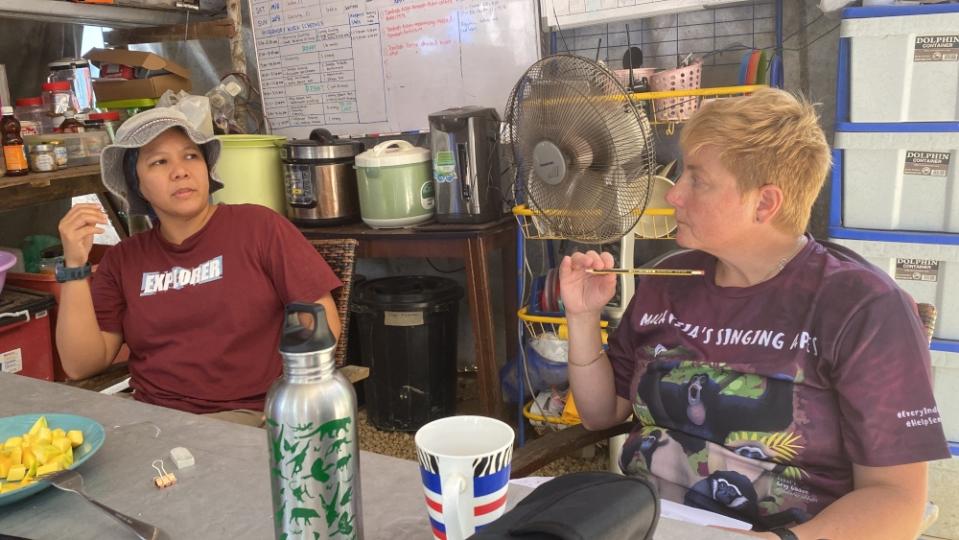Saving the ‘singing swingers’: Gibbon conservation challenges in Malaysia

KUALA LUMPUR, Sept 2 — The enchanting melody of the rainforest reverberates with the songs of gibbons, the “singing swingers” of Malaysia that have long held a special place in the heart of the country’s forests.
Yet, behind their enchanting melodies lies a tale of conservation challenges and the determined efforts of dedicated individuals and organisations to save these endangered primates.
Malaysia boasts five species of gibbons, residing in various corners of the country from peninsular Malaysia to Sabah and Sarawak.
These agile and social creatures, known for their complex songs and tree-dwelling lifestyle, are critical to the ecosystems that they inhabit.
Habitat loss: A threat to gibbons’ survival
Habitat loss stands as one of the significant threats to gibbons and the loss of forests deprives gibbons of their homes and food sources, pushing them closer to the brink of extinction, said the International Union for Conservation of Nature (IUCN) Species Group Section on Small Apes vice-chairman Susan M. Cheyne.
“Gibbons in the wild can be quite resilient, but they need trees. That is where they get all their food from. If you take away their home, then there will be no gibbons,” she said.

International Union for Conservation of Nature (IUCN) Species Group Section on Small Apes vice-chairman Susan M. Cheyne talks to Malay Mail at Suria KLCC, August 18, 2023. — Picture by Raymond Manuel
According to Gibbon Conservation Society (GCS) founder Mariani Ramli, 37, these “true forest farmers” act as seed dispersers, contributing to forest regeneration and maintaining the health of their habitat.
“They help keep the forest healthy. When they keep the forest healthy, we will not have as many floods and they are the farmers that help give us food, especially for the people who live near the forest. The forest is like a pharmacy to them where they get their medication,” said Mariani, who is better known as Bam.
Cheyne suggested the creation of canopy bridges could be a potential protection solution as these structures will allow gibbons and other arboreal animals to safely cross the forest without encountering humans or electrical cables.
“Canopy bridges have been successful in many other countries and can help protect gibbons from electrocution and road accidents.
“These canopy bridges are very successful in Singapore for langurs, for gibbons in China, Vietnam, India and Indonesia and orangutans in Sabah,” she explained.
While the idea of canopy bridges has been floated, Bam pointed out that more support and interest from various authorities such as wildlife protection societies, rescue centres, local communities and government are needed to implement them effectively.
Gibbons in the pet trade: A complex challenge
One of the most pressing issues in gibbon conservation is the illegal pet trade and the complexity of the problem lies not only in the capture of these primates, but also in understanding why people keep them as pets.
“Frequently, individuals acquire gibbons as pets, often isolating them from their families and confining them to cramped enclosures, leading to inadequate socialisation and improper nutrition.
“Why do people opt to keep gibbons as pets? Why not opt for more appropriate companions like cats or dogs that are domesticated and well-suited for human interaction?” Cheyne said, adding that gibbons are social animals and designed to thrive in their natural habitat. She said that illegal wildlife traders have large international networks, but it all starts locally.
“In the context of Malaysia and Indonesia, the ease of purchasing gibbon species online underscores the gravity of the situation. The sale of gibbons from these regions to destinations like Belize, Europe, or the United States exacerbates the problem,” she said.
She added that efforts to combat this problem require a holistic approach, including better training for wildlife departments, improved rescue centre facilities, and a clear understanding of wild gibbon populations.
“It’s making sure that gibbon will be able to survive in the wild,” Cheyne emphasised.

Mariani Ramli, founder of Gibbon Conservation Society, says these ‘true forest farmers’ act as seed dispersers, contributing to forest regeneration and maintaining the health of their habitat. — Picture by Raymond Manuel
Song of survival: Gibbon singing and behaviour
Gibbons are renowned for their unique singing, a complex communication method that shapes their social interactions.
“Singing is a fundamental part of their social behaviour. It’s their language. They use it for communication between adults and with other gibbon families. The distinct songs signify not only their territorial boundaries but also their emotions and interactions with other gibbons,” Cheyne said.
Each gibbon species has its own song, and within that, the males and females have their version of it.
“Also, it’s how they find mates and flirt. When gibbons are not yet paired, their songs are their personal calling cards to find a mate. When two individuals are starting to possibly like each other, they will start to coordinate the singing a little bit, even if they’re not together.
“Also, the song can travel up to 3km, so they have a wide range of choices. It is one of the most fundamental parts of their social behaviour,” she said.
Cheyne added that in the wild, the young gibbons may take longer because they don’t compete with the adults and they usually begin singing at around four to six years old, harmonising with the adults but not directly competing with them.
“Whereas, in rescue centres, learning to sing can happen more quickly due to less competition. However, to be confident that a young gibbon has properly learned to sing, it might take until they are about six or seven years old. Researchers can track their progress by recording their singing and analysing their song development over time to determine if they have mastered their species’ language,” she said.
However, Bam said the challenge lies in encouraging young gibbons raised in captivity how to sing like wild gibbons.
Young gibbons typically learn by imitating their same-sex parents, much like humans learn to talk by copying their parents and others but when gibbons are taken into the pet trade as babies, they miss this crucial learning opportunity.
“Just as humans need to learn from their family and peers to communicate effectively, gibbons need to learn from other gibbons to sing properly.
“It’s quite challenging, especially for gibbons that have mental trauma from their time with humans. Some have even been sexually abused. Besides, young gibbons taken from the wild to be sold as pets often lose the opportunity to learn their complex songs from their parents,” said Bam, who oversees the rehabilitation of gibbons at GCS.
Importance of rehabilitation
Rehabilitation can be a long and delicate process with the duration varying from five to 15 years, said Cheyne, reflecting on the unique challenges these animals face due to their history of human interaction.
The rehabilitation centre’s task is to encourage gibbons to relearn their natural behaviours and limit human interaction as much as possible, allowing them to become self-sufficient in the wild and ultimately, to provide gibbons with the opportunity to be as close to their wild counterparts as possible.
“Rescue centres like the one Bam is involved with don’t just offer temporary solutions. Instead, they promise a lifetime of care, as their duty extends beyond the initial rescue and rehabilitation. Even after release, continuous monitoring ensures the gibbons’ safety and success in their natural environment,” said Cheyne.
The positive outcomes achieved by the GCS, like the transformation of the male White-Handed Gibbon baby, Axel, who was born on June 29 to parents Ebony and Coley at the Malaya Gibbon Rehabilitation Project in Raub, Pahang exemplify the potential of dedicated rehabilitation efforts.
“His parents Ebony and Coley were kept as pets but then they were rescued. He will hopefully never know what it is like to be a pet. He will only know what it is like to be a gibbon with gibbon parents and that is what we want,” said Bam.
Cheyne also stressed the two key challenges in releasing gibbons back into the wild.
“First, it’s imperative to ascertain if the gibbons are genuinely ready, adhering to international guidelines and conducting thorough assessments.
“Second, there’s an emotional component involved as the team invests significant time and effort in saving and preparing these animals for a new life in the wild,” she said.

Rehabilitation can be a long and delicate process with the duration varying from five to 15 years, said Cheyne, reflecting on the unique challenges these animals face due to their history of human interaction. — Picture from Facebook/Gibbon Conservation Society
Bam added that young gibbons have a better chance of adapting to their natural habitat, making them easier to rehabilitate compared to adult gibbons.
However, releasing a young gibbon alone is not recommended, as they need a companion for a smoother transition.
“Pairing gibbons and waiting until they reach the age when they’d naturally leave their family in the wild, typically around seven or eight years old, mirrors their natural development.
“Statistics show that more than 90 per cent of wildlife released without proper rehabilitation will die in the wild,” she said.
Urgency of developing gibbon action plans
Cheyne said that the IUCN Species Group Section on Small Apes’ ultimate goal is to develop action plans for all 11 countries where gibbons are found, adding that Malaysia is pioneering this initiative, with Indonesia close behind.
She emphasised that the action plans are more than just documents — they come with budgets and specific steps.
“We need law enforcement to keep gibbons out of the pet trade, but we must break down these goals into smaller, actionable steps,” she said.
“Do wildlife departments need better training? Do rescue centres require more funding and staff training? Do we need to understand wild gibbon populations better?” she asked.
Bam added that gibbons’ status as an endangered and protected species under the Wildlife Conservation Act 2022 underscores the urgency of conservation efforts.
However, the level of support they receive still lagged that given to more iconic species like tigers.
“We need more support, both from the government and organisations. We’re a small team trying our best. We need more help from gibbon conservation in Malaysia,” said Bam.
Susan echoed the need for a united front in Malaysia and acknowledged the importance of focusing on all wildlife but underlined the uniqueness of gibbons, which belong to an exclusive club of only 20 species across 11 countries.
“This rarity offers the potential for significant international cooperation. Yet, rehabilitation and rewilding gibbons are intricate tasks,” she said.

Cheyne said that by thinking globally and acting locally, rehabilitation centres in Malaysia can benefit from ideas and practices from other rehabilitation centres worldwide. — Picture by Aisyah Bae from Gibbon Conservation Society.
International collaboration and local efforts
The lack of local reference and educational resources in Malaysia has driven the need for international cooperation, said Bam.
Bam’s experience volunteering in Thailand and Cambodia highlights the importance of learning from those with more experience and knowledge in gibbon rehabilitation.
“This knowledge transfer is not only enriching their efforts but also laying the groundwork for Malaysian biology and zoology students to gain insights into the complex field of rehabilitation,” she said.
Bam added that by actively engaging with international gibbon and primate organisations and seeking Susan’s expertise ensures GCS’s work is on track while allowing them to learn from mistakes and successes.
“Hence, audits done by IUCN in our Pahang rehabilitation centre help us improve continuously as we’re always learning and growing,” said Bam.
Cheyne said that by thinking globally and acting locally, rehabilitation centres in Malaysia can benefit from ideas and practices from other rehabilitation centres worldwide.
“The international community provides invaluable insights into the rehabilitation process, fostering an environment of continuous learning and improvement.
“Gibbon rehabilitation is still evolving, open and honest discussions are critical in this ongoing process of refinement,” she said.
Bam also said that Malaysia holds a unique place in gibbon rehabilitation history, having initiated projects as far back as 1975.
However, many gibbons faced challenges and mortality rates were high in the early years but with renewed efforts, international guidelines, and collaboration, Malaysia’s gibbon rehabilitation projects are poised for success.
These efforts are not only vital for protecting gibbons but also set a potential standard for wildlife rehabilitation efforts across Malaysia.
In early July, the Pahang Sultan’s second son Tengku Arif Bendahara Muhammad Iskandar Ri’ayatuddin Shah Sultan Abdullah became GCS’s official royal patron.



